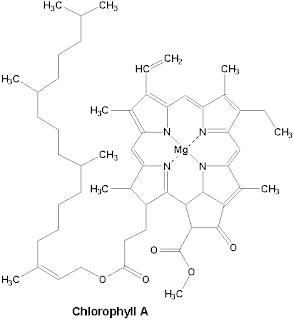Green plants are the only plants in which produce oxygen and make food, this is called Photosynthesis. Photosynthesis, meaning "together with light," takes place in the chloroplast which contain chlorophyll. The chlorophyll in them use and absorb sunlight. The sunlight then causes green plants to mix together both Carbon Dioxide (CO2) and Water (H2O) to create sugar and oxygen.
Some people tend to confuse Photosynthesis with Respiration. The difference between them though, is that Photosynthesis only occurs in plants. On the other hand, respiration occurs in all living organisms. Respiration is a biological process in which living organism inhale(take) oxygen from atmosphere and in cell this oxygen is used for oxidation of food to produce energy, carbon dioxide is evolved through this mechanism.
Process of photosynthesis.
Green plants then use this sugar to make starch. Starch is a white food substance that is made and stored in most plants. From sugar, green plants also produce fats. Fats is an oily liquid or greasy substance making up the main bulk of the tissue of animals, and distributed in the seeds of a plant. Another substance, from which green plants produce from sugar, are proteins. Proteins are found in all living cells of animals and plants. Proteins are necessary for growth and life. Also Carbon Dioxide and Oxygen enter and leave through tiny pores called the stomata. The stomata are on the underside of the leave.
The cycle is then repeated.
New Insights
-Did You Know Plants Sleep Too?
Since there is no sunlight at night, plants can not make food. The plants shut down by closing their stomata and await for the next day to begin to make food again.
- Chlorophyll: Any of a group of green pigments that are found in the chloroplasts of plants and in other photosynthetic organisms
- Chloroplast:The organelle that carries out photosynthesis and starch grain formation. A chlorophyll-containing organelle in plants that is the site of photosynthesis



